Ananke | Greek God

Ananque (Greek: Ανάγκη, transl. Ananke, from the noun ἀνάγκη, "force," "constraint," "necessity"), in Greek mythology, was the goddess of inevitability, mother of the Moiras and personification of fate, unalterable necessity. She was married to Moros.
She is usually represented by a serpent, symbolizing, with Aeon, the beginning of the Cosmos, in Orphic cosmogony. Together they surrounded the primordial egg of solid matter, bringing about the creation of the ordered universe. She was also represented by a figure carrying a torch or a spindle, as the representation of Moira (fate).
Ananque can be related to the Homeric Moira and to Tecmor, the primitive goddess of order in the cosmogony of Alcman (7th century BCE). She initially represented the universal principle of natural order that controlled the entire fate of mortals, going beyond the power of the younger gods, whose fates were sometimes controlled by her. Greek writers called this power Moira or Ananque, and not even the gods could alter what had been ordained by her.
According to the Greek traveler Pausanias, there was a temple in ancient Corinth where the goddesses Ananque and Bia (violence) were worshipped together in the same shrine.
In Roman mythology, she was known as Necessitas ("need").
Etymology
"Anank" derives from the Ancient Greek noun, ἀνάγκη (Ionian αναγκαίη: anankaíe), meaning 'restricted strength' or 'necessity'. Homer employs the term in the sense of necessity (αναγκαίη πολεμίζειν, 'it is necessary to fight') or strength (εξ 'ανάγκης, 'by force').
In classical literature, the word is also used as fatality or fate (ανάγκκη δαιμόνων, fate "by the daemones or the gods"), and for extensive compulsion or torture by someone superior. The word is often personified in poetry as Simonides of Ceos: "Even the gods cannot fight anánkê."
In the philosophical sense, it means necessity or logical necessity, or laws of nature,
Mythic cosmogony
In Alcman's cosmogony, first arose Thesis (creation), and then simultaneously Poros (way) and Tecmor (end). Poros is related to the beginning of all things, and Tecmor, with the end.
Subsequently, in the Orphic cosmogony, initially came Thesis (creation), whose ineffable nature is not expressed, then came Hidros (waters), with whom she united and generated Gaia, later Hidros united with her daughter Gaia, with whom she had Anank and Chronos.
Ananque is the primordial goddess of inevitability, and she has been intertwined with her companion Aeon, the god of time, since the beginning of time. They represent the eternal cosmic forces of Fate and Time.
Together they form the "primordial egg" of solid matter (Orphic Egg) and split into its constituent parts (earth, sky and sea) and thus create the ordered universe. These ideas were the basis of the cosmogony of Empedocles (5th century BC).
Neicos (hate) separated the four elements in the initial sphere until Philia (love) emerged and balanced everything. Hate and Love fight each other in a recurring cosmic process, where Ananque must maintain the immemorial order.
